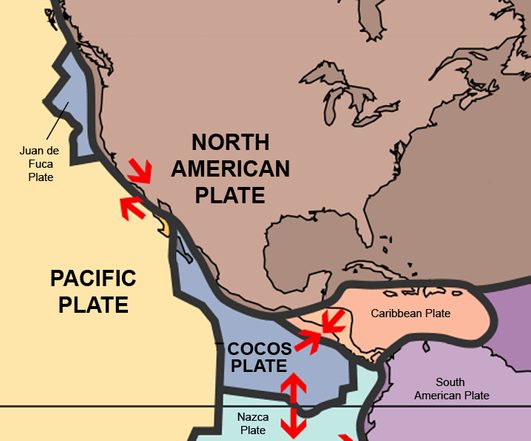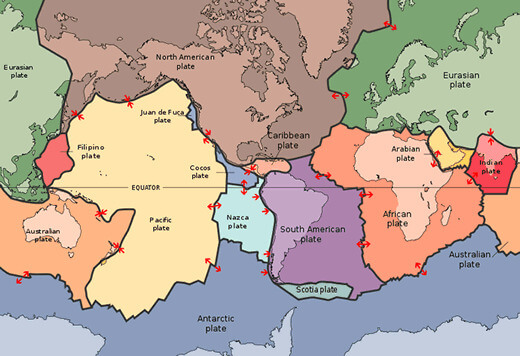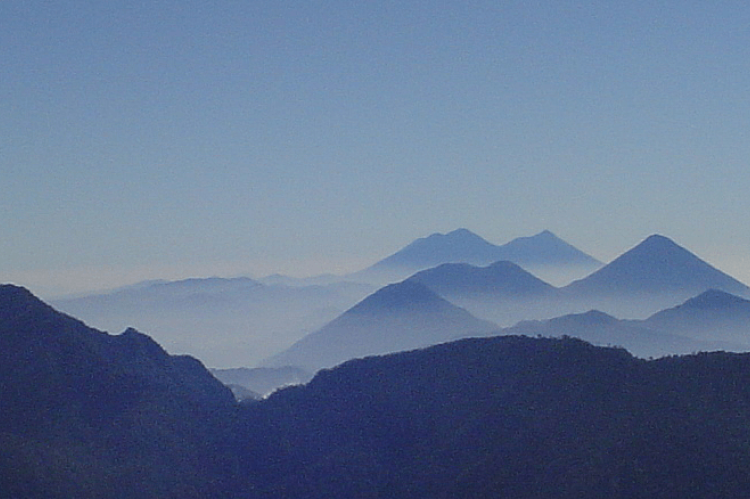The North American Plate: An Intricate Dance of Tectonic Forces
The North American Plate, a massive tectonic entity, is Earth's second-largest tectonic plate. Underlying substantial portions of North America and Central America and even reaching into the Caribbean Sea, its dynamics shape the region's geological features, fostering a complex landscape.
The North American Plate
An Intricate Dance of Tectonic Forces
The North American Plate, a massive tectonic entity of approximately 76,000,000 square kilometers (29,000,000 square miles), is Earth's second-largest tectonic plate. Underlying substantial portions of North America and Central America and even reaching into the Caribbean Sea, its dynamic interactions with neighboring plates shape the region's geological features, fostering a complex landscape.
Boundary Tales
The western frontier of the North American Plate hosts a convergence with the Pacific Plate and Cocos Plate, setting the stage for intricate geological dynamics. Along the coastal reaches of Alaska, the Queen Charlotte Fault traces the westerly boundary, intertwining with the Cascadia subduction zone and the San Andreas Fault, a seismic heavyweight coursing through California. This boundary continues southward into the Gulf of California, where the East Pacific Rise and the Middle America Trench exert their influences.
Northern Extents and Southern Complexities
The plate's boundary to the north transforms into the Gakkel Ridge, a continuation of the Mid-Atlantic ridge. This expansive northern stretch delves into Siberia, highlighting the plate's far-reaching influence beneath the Arctic.
The southern confines of the North American Plate encounter complexities, navigating a multifaceted boundary. To the west, a transform fault engages with the Cocos Plate, marked by the Swan Islands Transform Fault beneath the Caribbean Sea and the Motagua Fault traversing Guatemala. Meanwhile, in the Caribbean region, the parallel Septentrional and Enriquillo-Plantain Garden faults, bounding the Gonâve Microplate, further accentuate the intricate nature of the southern boundary.

Map depicting the North American plate boundaries.
An Elusive Southerly Margin
The southerly margin remains elusive and mysterious, stretching eastward to the Mid-Atlantic Ridge and defining the boundary between the North American and South American Plates. This vague expanse holds geological secrets yet to be fully unraveled.
Baja California's Tectonic Journey
Once an integral part of the North American Plate, the Baja California Peninsula embarked on a transformative journey. Now part of the Pacific Plate, it steadily moves away from the East Pacific Rise in a north-northwest direction. The Gulf of California, a testament to this tectonic evolution, showcases a network of rifts and transform faults, reflecting the ongoing processes shaping the region.
In conclusion, the North American Plate unfolds as a central player in the intricate symphony of tectonic forces, weaving a geological narrative that spans vast landscapes and explores the depths of Arctic expanses to the mysteries of southern frontiers.

Map depicting the major tectonic plates in the world.
